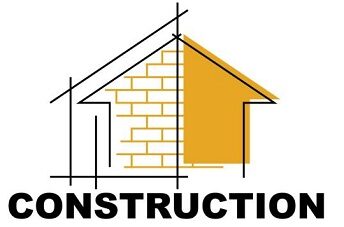An essential element of each building, the plumbing system ensures several functions, including the water supply to a home, the production of hot water and the evacuation of waste water from the kitchen or bathroom to the outside.
The plumbing system is made up of several elements, so that water distribution is smooth and efficient throughout the house. You must properly install the pipes, which guarantee the delivery of water into your building. You will also need to check the water pressure. If this is not sufficient, it is necessary to install an autoclave, that is to say, a very large tank, which is responsible for optimizing the water pressure in the upper floors of the building.
Very important in the plumbing system, we must not forget to check the main faucet, which is used to regulate and stop the flow of water. The meter, for its part, measures water consumption in an individual apartment. Another fundamental element is also worth mentioning: the collector. The latter ensures the proper distribution of water to all appliances or rooms that need it, such as radiators, toilets, bathrooms and kitchens. Finally, don’t forget the drain pipes. This is a hydraulic system installed along the exterior part of the walls or in the ground, making it possible to guarantee perfect evacuation of wastewater into the sewer network (a recovery network recovers the wastewater).
The materials needed to create the system
The material used to create a plumbing system for the home changes depending on the physical characteristics of the environment in which it will be placed. But, it must comply with all current regulations. Domestic pipes can be made from galvanized iron, known as mild steel, a fairly malleable and not too expensive material.
If iron, galvanized or turned, was very popular before, new generation materials, such as copper, have stolen the spotlight. This metal is preferred because of its great resistance to corrosion and polluting factors, its high conductivity, both in hydraulic and electrical circuits, and its fully recyclable nature. Robust and easy to work, it can be raw, useful in case of linear passages, or annealed, and essential in the case of installations characterized by numerous curved sections. Only problem: the use of this material is not authorized for the transport of drinking water.
Other materials like PVC, polyethylene and multi-layer pipes also remain wise choices. Practical and durable, they are very flexible, inexpensive and easy to find. Simply choose the model that complies with current standards and is suitable for use in a domestic and food environment.
Necessary elements for correct construction of the hydraulic system: seals are not chosen lightly. Its choice depends on the type of pipe chosen. Economical and easy to use, but processing or compressing them can be time-consuming and laborious.
To carry out the work correctly, equip yourself with good equipment to make your task easier and to avoid unnecessary waste of time. In general, you will need all the typical tools used by plumbers that you can easily find at any hardware or home improvement store.
Creating the system step by step
Setting up the collector system is relatively simple. It is installed in a special box, placed in easy-to-access places. From this mechanism, a hot water pipe and a cold water pipe leave which reach the different elements of the house. In addition to being easy to implement, the collection system has another major advantage. Joints, nerve parts of the hydraulic system, are subject to rapid deterioration. In this case, their replacement is very simple due to the absence of any under-track structure. This choice has another undeniable advantage: the joints are made inside the collector box and no longer under the track. You will therefore be able to properly insulate the pipe in the event of a leak. The disadvantage of the collection system, however, lies in its high cost and its relatively large size.
You can also create a diversion system, which is characterized by the installation of a main pipe. Next, you will need to proceed with the installation of special connectors called TEE connectors, which will provide the necessary bypasses to bring water to all the plumbing fixtures in the house. It is advisable to install them in easily accessible places, but well covered with tiles. This is to avoid difficulties relating to troubleshooting in the event of problems. This will make it easy for you to find the source of a water leak on your pipes. Also choose the location of your diversion system carefully to avoid a drop in water flow, in the event that two or more taps activate instantly. This is also essential for aesthetic and practical reasons. Also consider using rigid pipes, unlike installing a collector system which requires flexible pipes (copper, multi-layer or polyethylene).
Types of risk-free DIY
With the exception of repair work which requires the presence of specialized personnel, routine maintenance and small repair work can be carried out safely by budding DIY enthusiasts. This is the case for the repair of taps, siphons, sanitary installations and minimal extensions of the same system. All you need to do is intervene in full compliance with the required safety conditions. To work safely, you must close te water tap throughout the apartment, and make sure that the central valve is not defective.
Replacing a faucet is the simplest operation. Simply dismantle the old defective model by loosening the bottom screw, hidden under the ring nut, and remove it from the pipes. After replacing the eyelet, the new faucet can be mounted by reversing the different disassembly steps. Creating a water drainage system is another type of intervention, which can be carried out alone. It will be enough to use gray plastic pipes, equipped with a joint, or to create curved connections using multi-layer flexible pipes at 15° and to ensure a slope of at least 1-2 cm.

